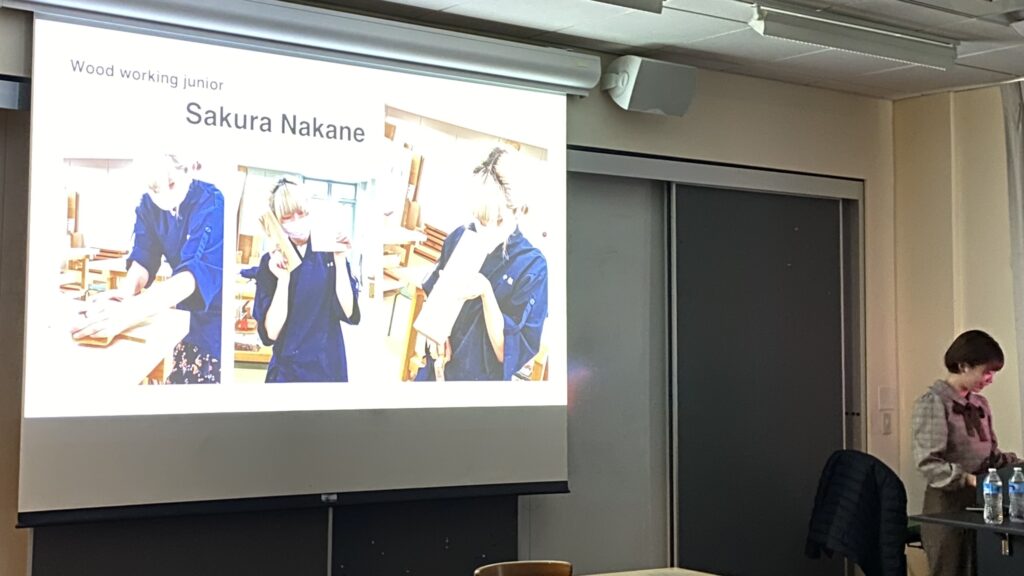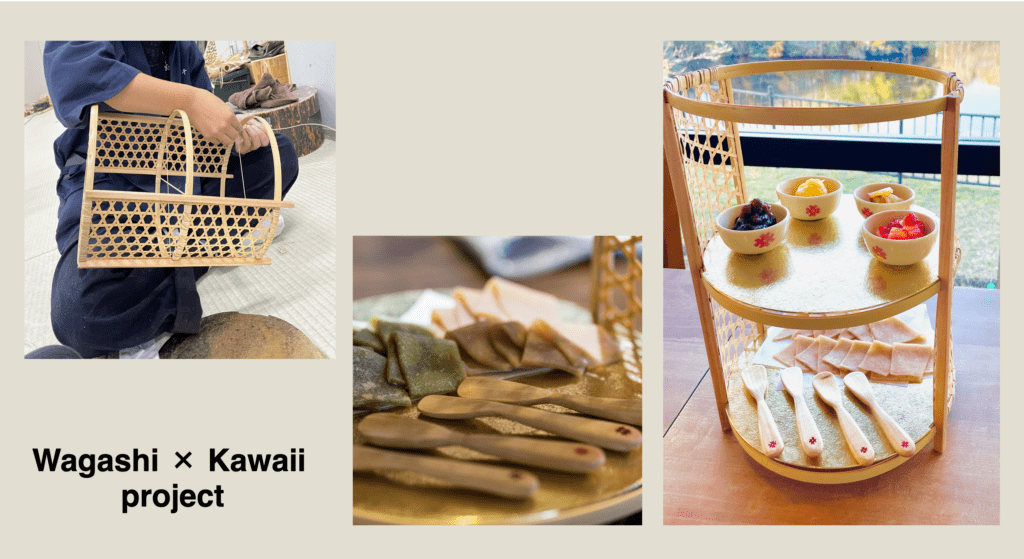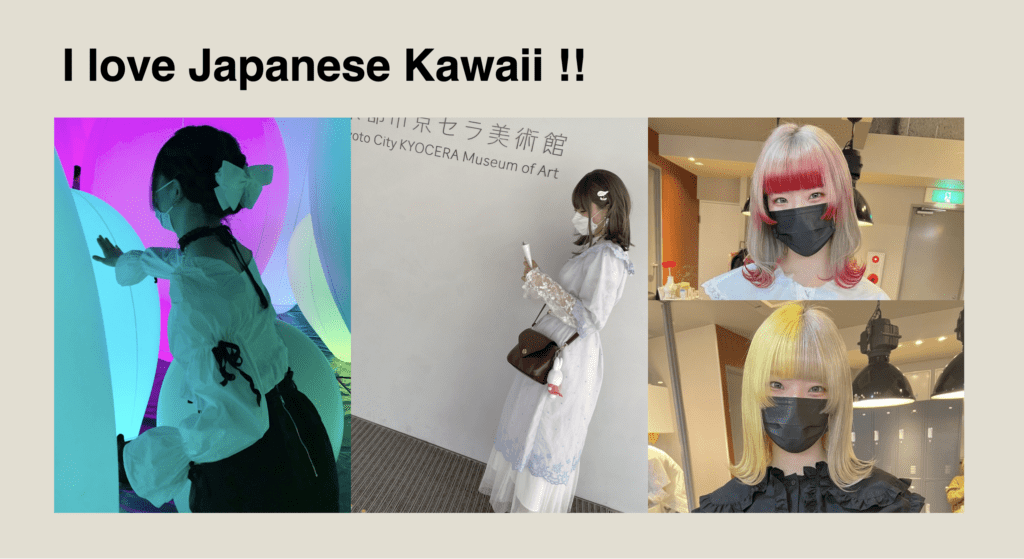Presentations of Two Youngsters from Kyoto Awed Me – 2
The week in Seattle has indeed become in their words, a life-changing experience for the two TASK students from Kyoto, Japan. I’m relieved and happy to hear that. The daily snapshots of their visit appear on the TASK website.
The highlight for me was the presentations they conducted at Seattle University on the 6th day. The audience, mostly design students as well as faculty members, were awed by the impeccable skill and precision of the TASK students.
I got permission from the students to share their slides with you here. I will try my best to accurately summarize their presentations in English on this blog site.
Woodworking by Sakura Nakane

“Hi, my name is Sakura Nakane. I’m a Junior at TASK, studying woodworking.”

“My introduction to Japan’s traditional woodworking was, rather sadly, the natural disaster that hit Japan in March 2011. A grave tsunami hit the northern part of Japan and many people lost their lives, homes, and belongings.
A TV program showed that a lot of furniture, like chests and drawers, which were made with Japan’s traditional woodworking techniques, survived. Because they were built with no nails, they were restored by replacing only the part that was damaged. None of the modern, mass-manufactured furniture using nails, on the other hand, could be salvaged once damaged.
When I watched the program, I was very impressed by the resilience and sustainability of Japan’s traditional woodworking. ‘I want to master this wonderful technique!’ was my reason to study at TASK.”
Apply Established Techniques to the New Lifestyle

“The technique of Japan’s traditional woodworking is admirable. But I’m not a fan of so-called Japan’s traditional design. They look outdated. How can we apply this technique to create items that are more fitted to our modern lifestyle?
One assignment was a proposal to a famous Japanese sweets maker with over 300 years of history, to combine their established brand and the English custom of high tea. The photo above is a serving shelf. Utilizing bamboo crafting, woodworking, metal crafting, and ceramics, we proposed a new style of enjoying Japanese tradition.”
Create What I Truly Love

“The serving shelf is a nice try, but I wouldn’t necessarily want it at home. It’s not kawaii (=cute) enough. Can I create a fashion item so kawaii that I would love to use it for myself?”

“In Japan, we celebrate coming of age when we turn 20. I’ve decided to wear my own creation to celebrate my coming of age. I got inspiration both from Maiko geta, sandals worn by apprentice geisha, and from Rocking Horse shoes designed by Vivienne Westwood (my favorite fashion designer)!”

“The photo above is my creation, named Rin. The challenge was to determine how much I should carve the heels. Carving too much, then they lose the strength to hold the body. Carving too little, then they look boring…”


“For my coming-of-age celebration, I had my pictures taken. I chose two different Furisode (long sleeved) kimono and obi. Of course, I’m wearing Rin!”
(Then Sakura showed a video of her preparing a planer, one of the main tools she uses for her woodworking.)
See a video of Sakura preparing her planer on Instagram.
“A planer is a tool we use often. Each time we use this tool, we carefully sharpen the blade until the surface shines like a mirror. We use two different types of whetstones one rough, the other fine. Each whetstone has to have a smooth, flat surface. So we start smoothing the surface of the whetstone with another tool.”
See a video of Sakura smoothing the surface of the planer
“The body of the planer needs tending, too. We level the surface of the planer. Using another tool, we make sure that the planer has a straight, smooth surface. Depending on the condition of the planer, it takes from 30 minutes to 3 hours to get the planer ready for use.”
Demo Time
Sakura fixed a wooden board on the desk, and took out her planer. Before using the tool, she carefully examined the blade.

Once she made sure the tool was conditioned, she demonstrated how to use the tool. It looked effortless.

She let several audience members to try planing the board, assisting each person. It was a special experience for the audience.

